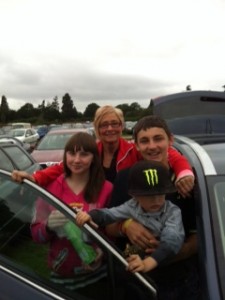Julie Heightley was so worried about her son Thomas suffering an epileptic fit at night that for two years she slept on a camp bed outside his room. The broken sleep and constant supervision of Thomas, who has autism and global developmental delay, was adversely affecting both Julie’s role as a carer and any prospect of independence for her son.
I came across Julie and Thomas’ story while researching a new report published today by the Voluntary Organisations Disability Group and the National Care Forum.
Now, thanks to a discrete network of wireless sensors dotted around the four-bedroom family home just outside Wolverhampton, Julie and Thomas, now five, are enjoying what Julie calls “a new lease of life”. Since the home was kitted out with the assistive technology two years ago, Thomas has been able to safely play and walk about the house independently without needing his mother’s 24-hours-a-day supervision. As well as having a slightly more hands-off approach to her five-year-old, Julie, a lone parent, has more time to spend her two older children who are in their teens.

Assistive – or personalised – technology includes a wide-range of supportive but unobtrusive services and equipment, from personal alarms for elderly people, to seizure monitors and more sophisticated fingerprint recognition systems that allow you to open the door without keys. It can also include computer software, hand held devices or video call systems that increase social interaction and family contact.
As fans of such services and systems point out, the traditional view of this technology is that it involves a medical and prescriptive approach (see the comments on the related VODG blogpost), but the key issue is to bring it to the consumer market, widen its use among the general public and raise awareness about its potential.
As the publication stresses, the social care sector has embraced a huge amount of innovation in assistive technology, using new methods to complement the physical work of support staff. it is transforming lives for the better. But the use of such services, systems and equipment does not enjoy the higher profile of our counterparts in the health sector, despite the fact it is entirely in line with the “person-centred” approach that care providers are working towards and encourages choice, control and independence – social care watchwords.
Today’s report, with its real life stories of how technology is transforming the lives of vulnerable people, aims to change that: “Put simply, technology is part of our modern landscape. We use it for work, leisure, at home and on the move. It makes our lives easier. People with life-long disabilities or age related conditions should share that experience, benefitting from the advantages that tailor-made technological support can bring.”
* Read more on the VODG website and download the report Using assistive technology to support personalisation in social care
